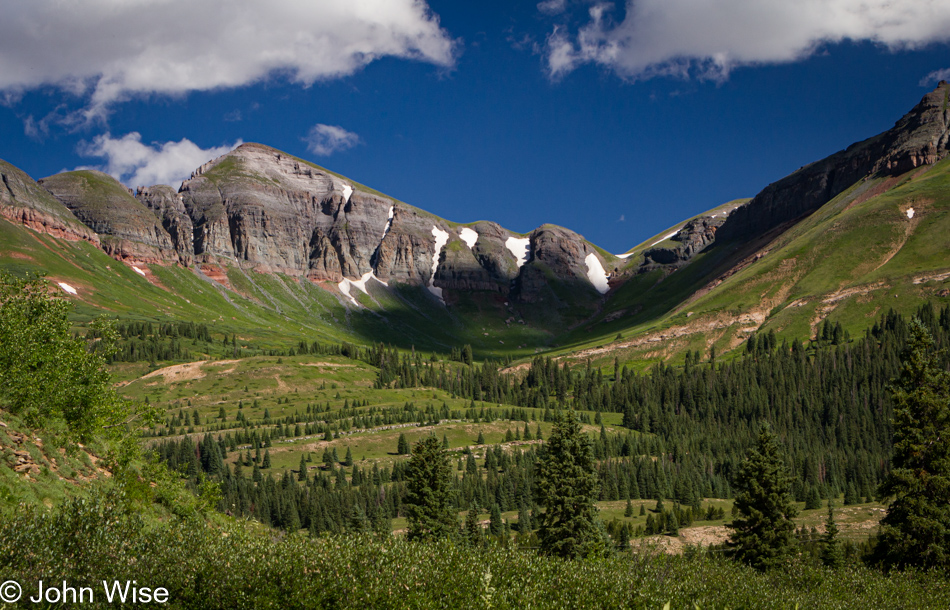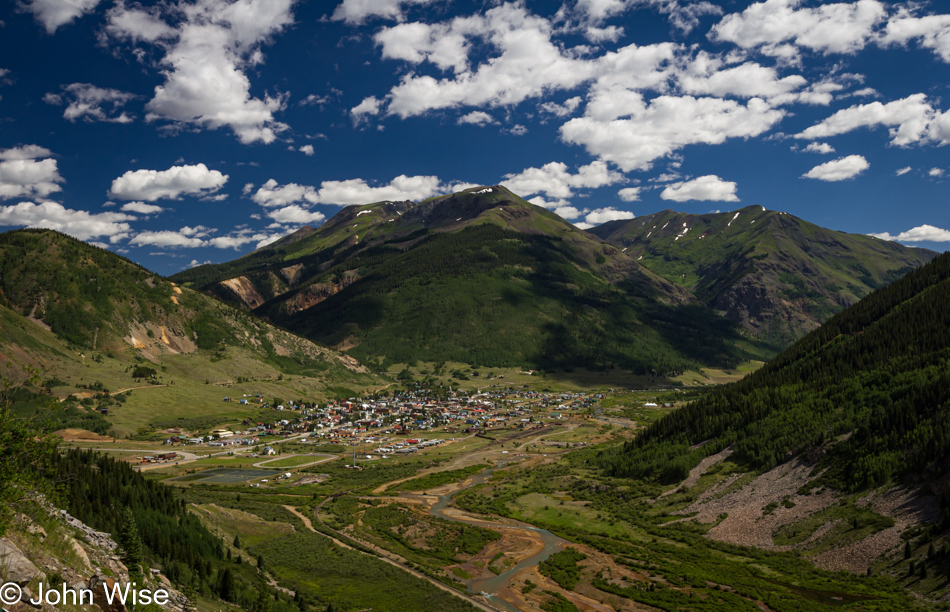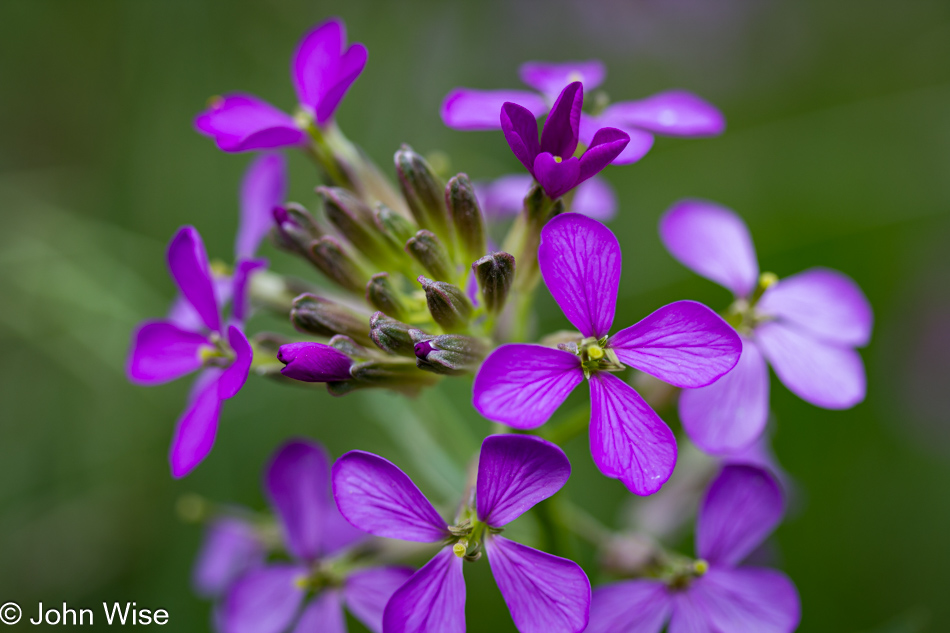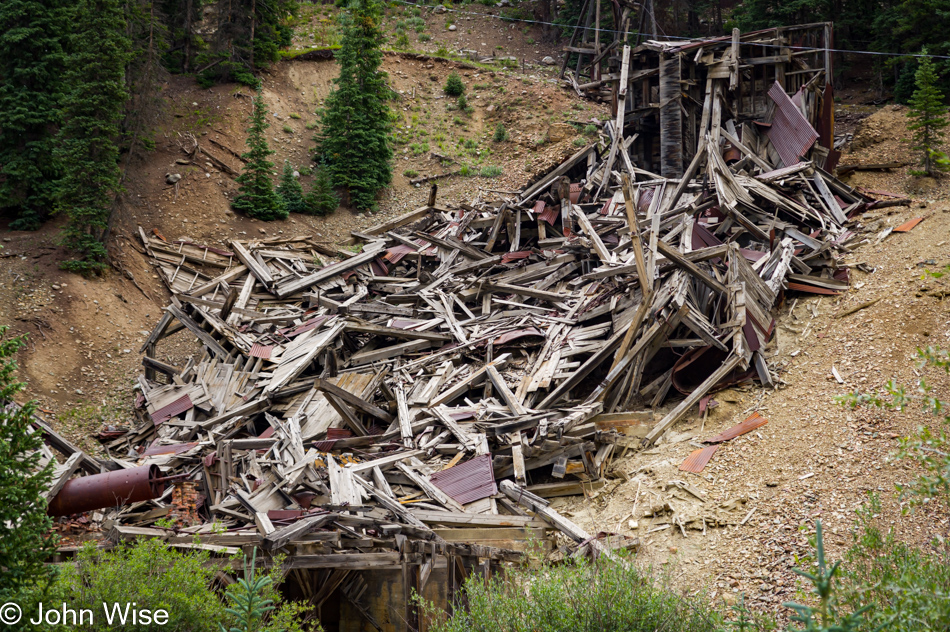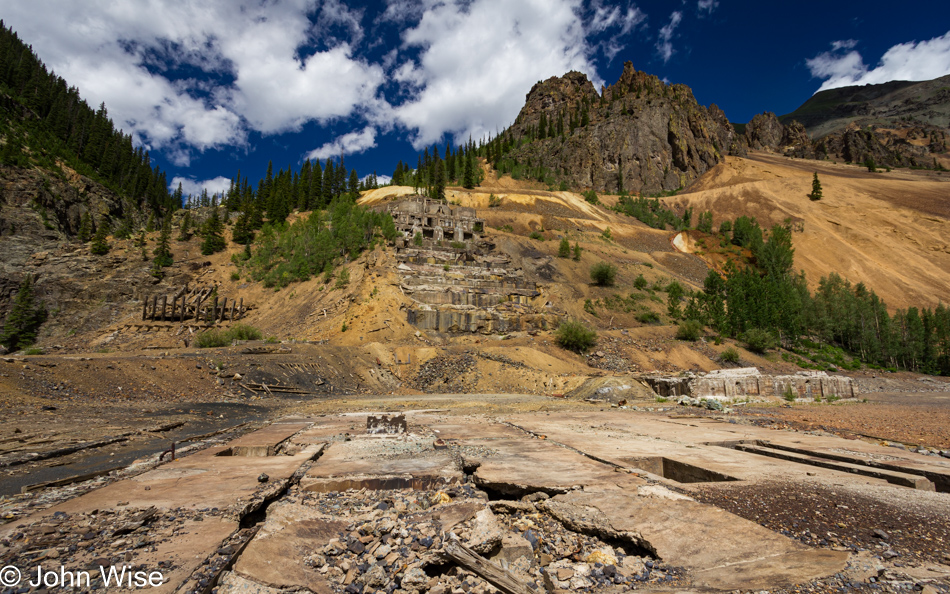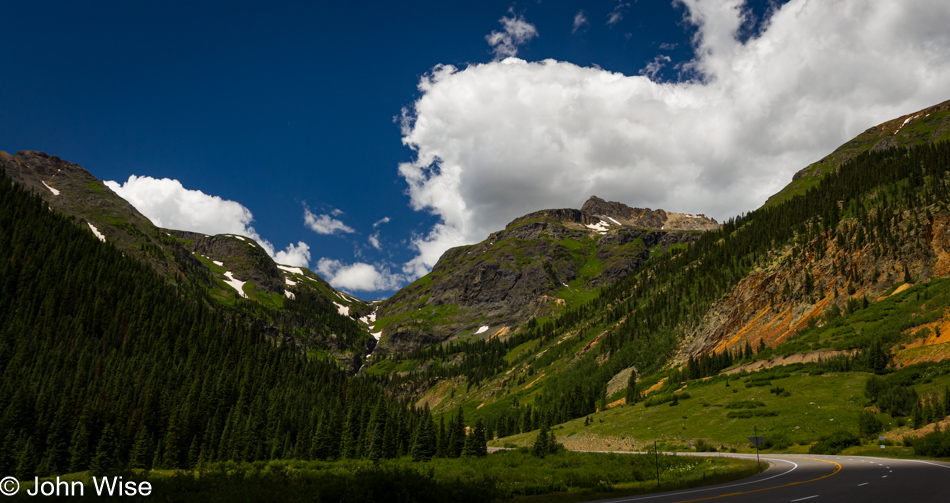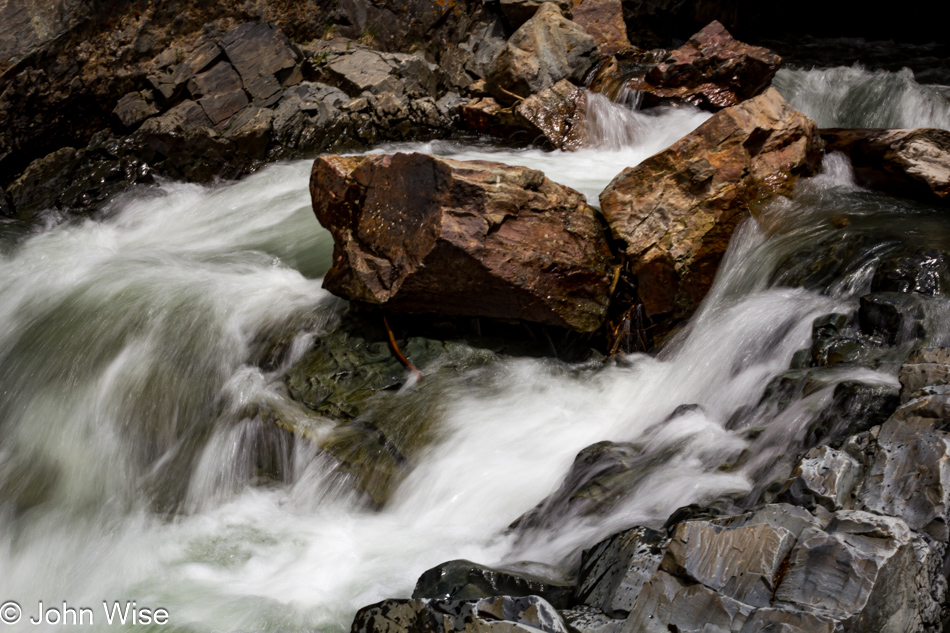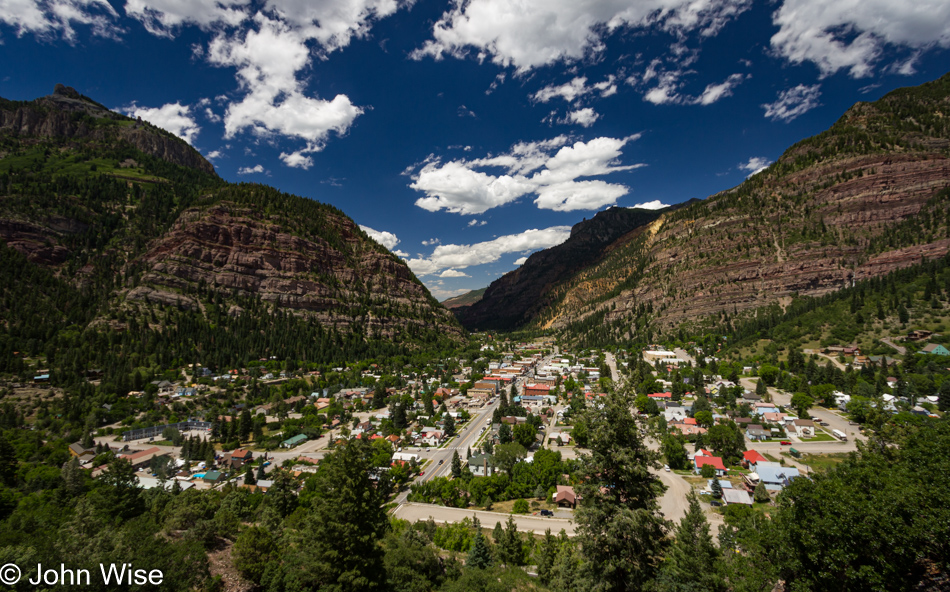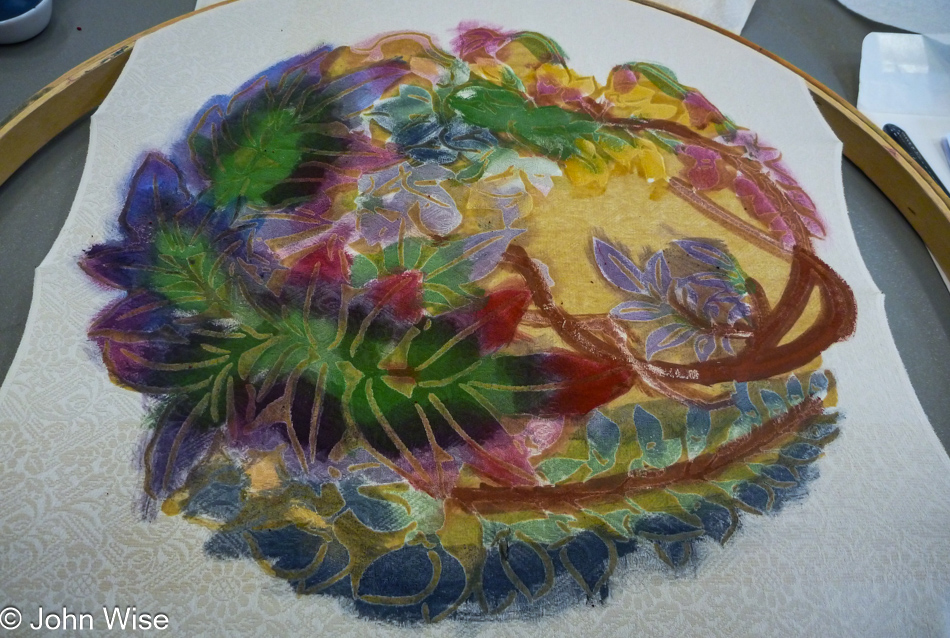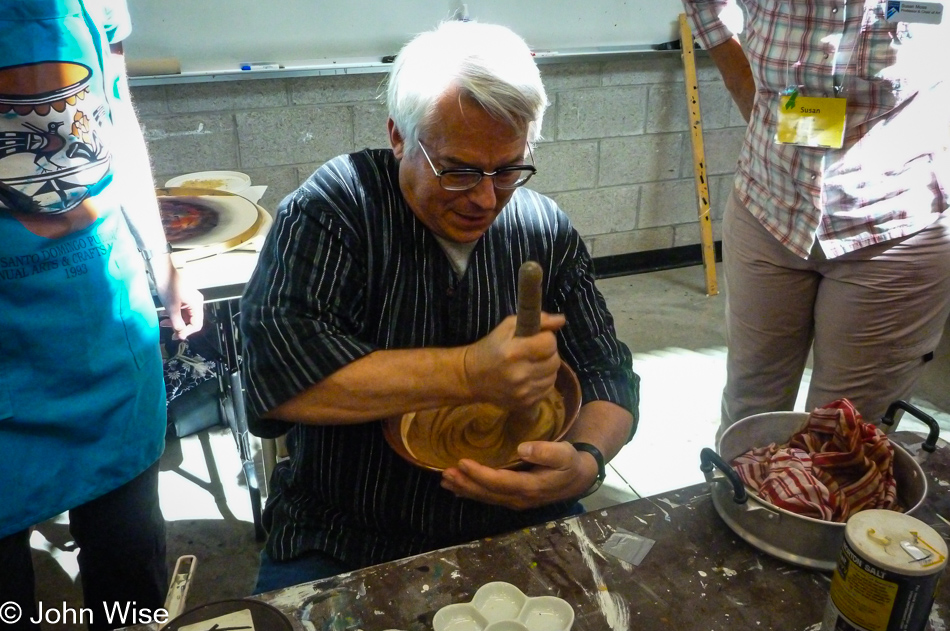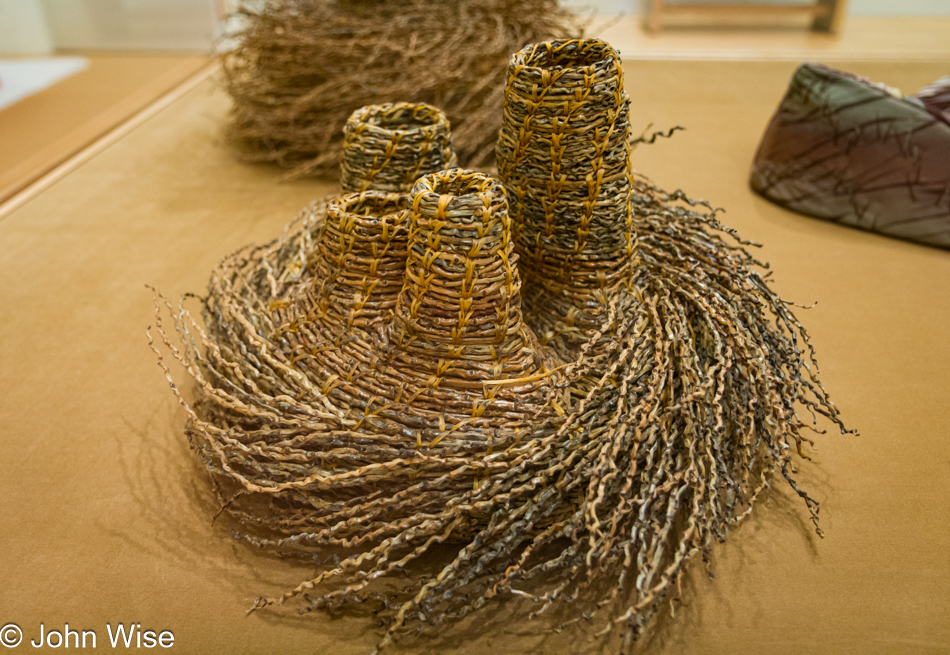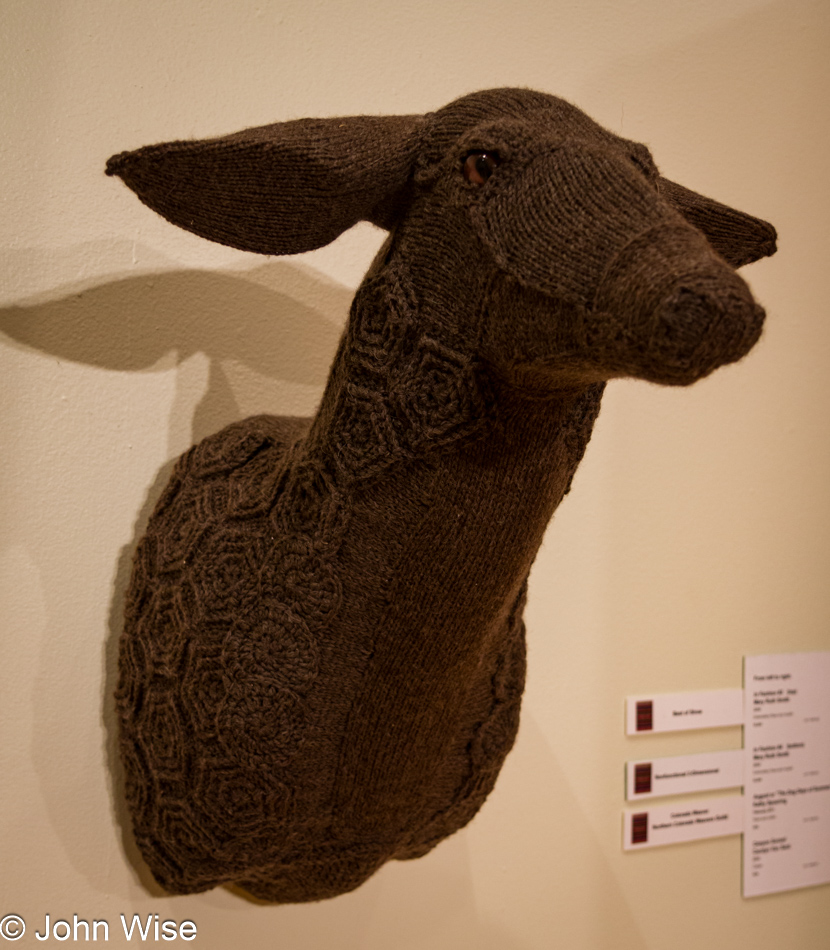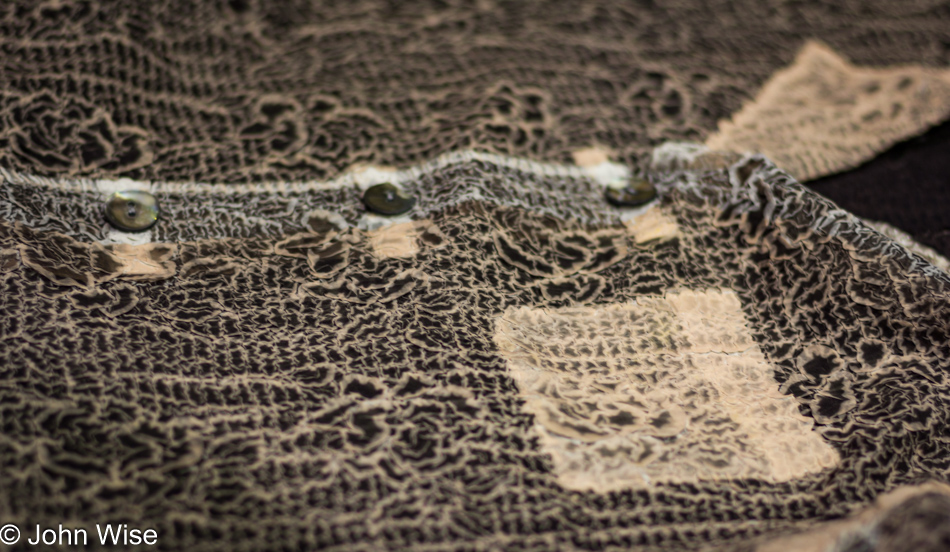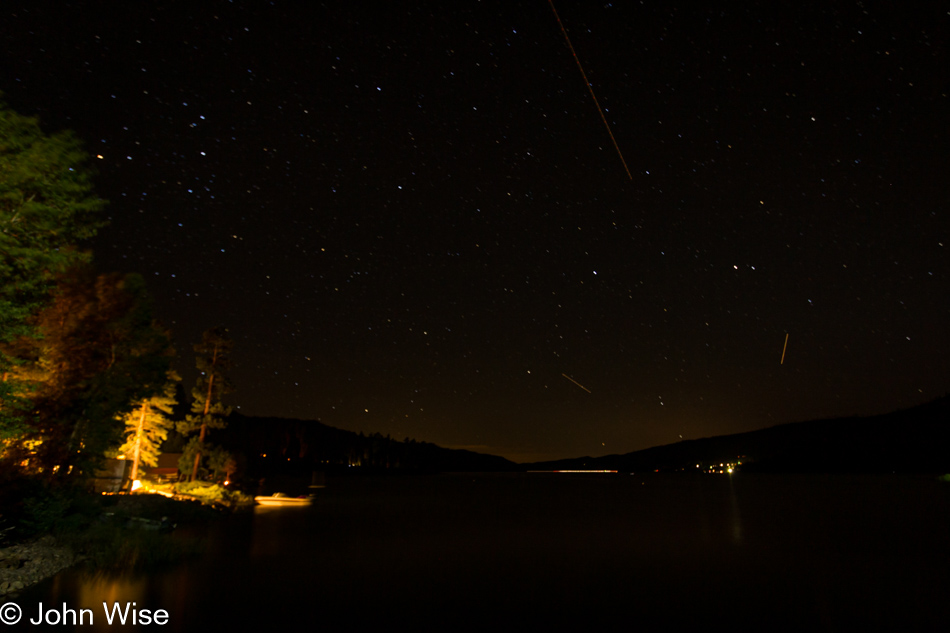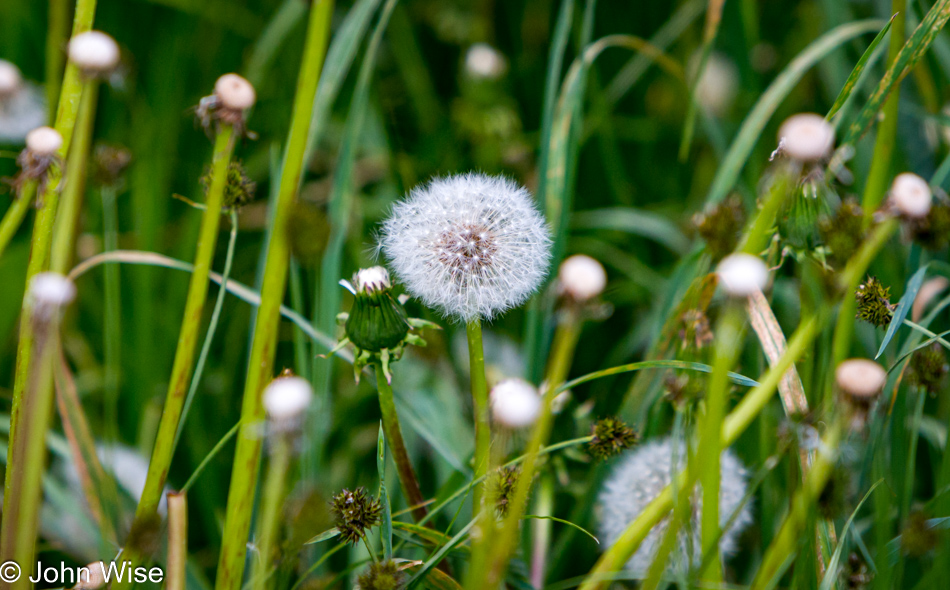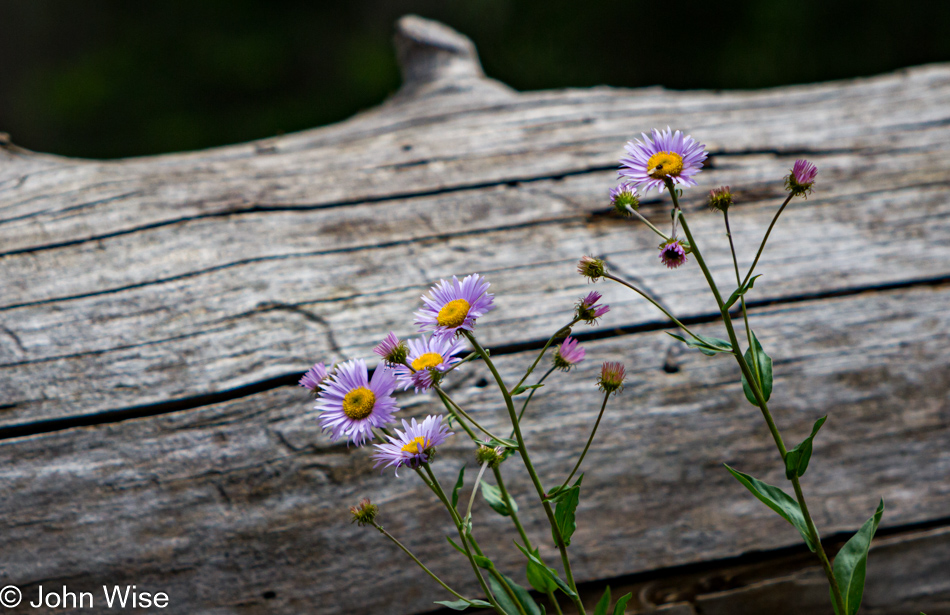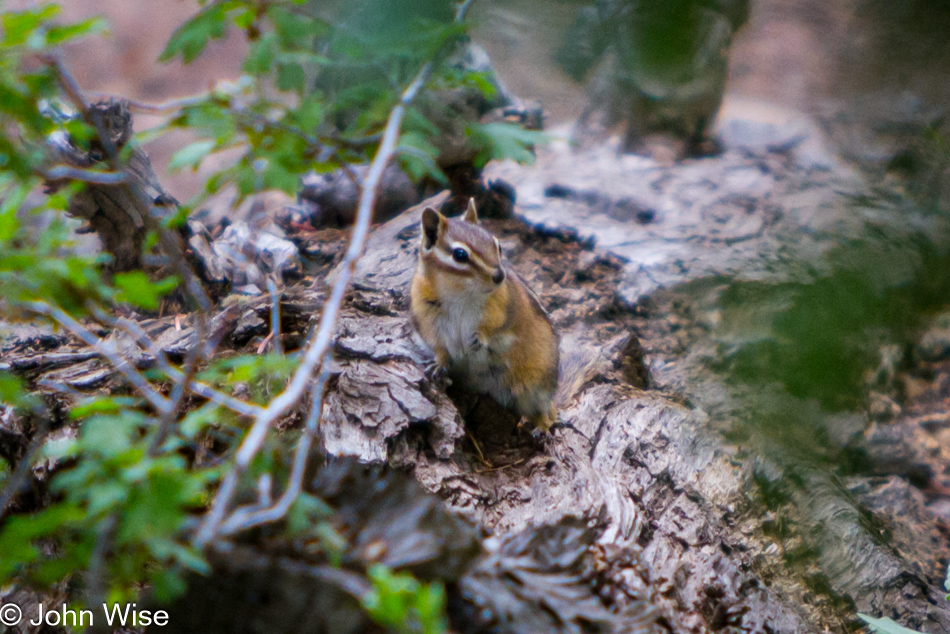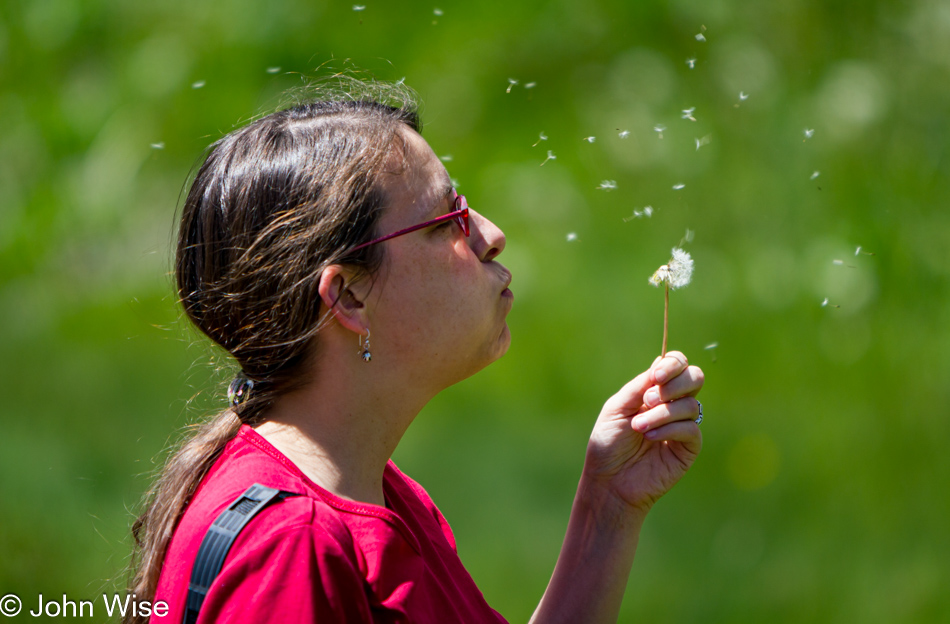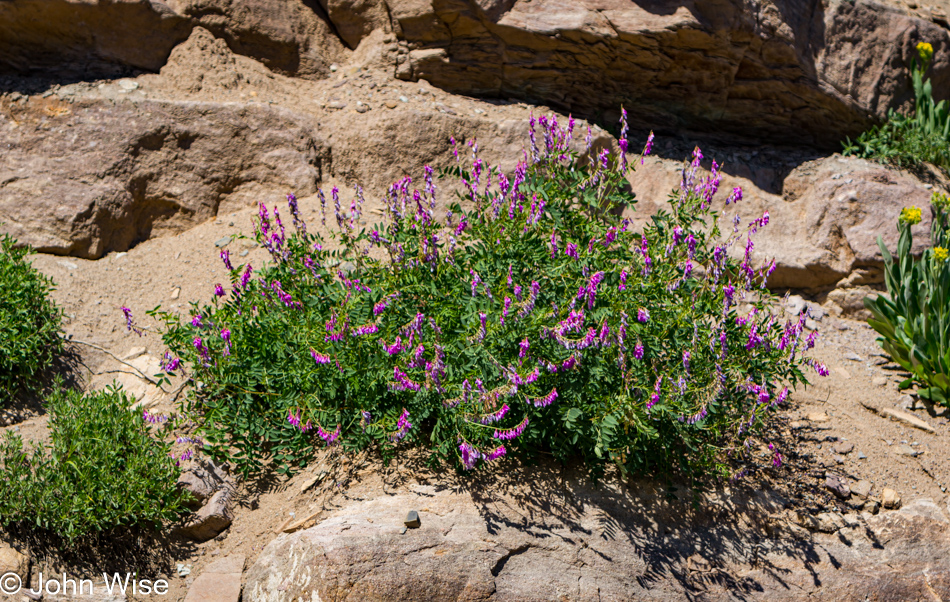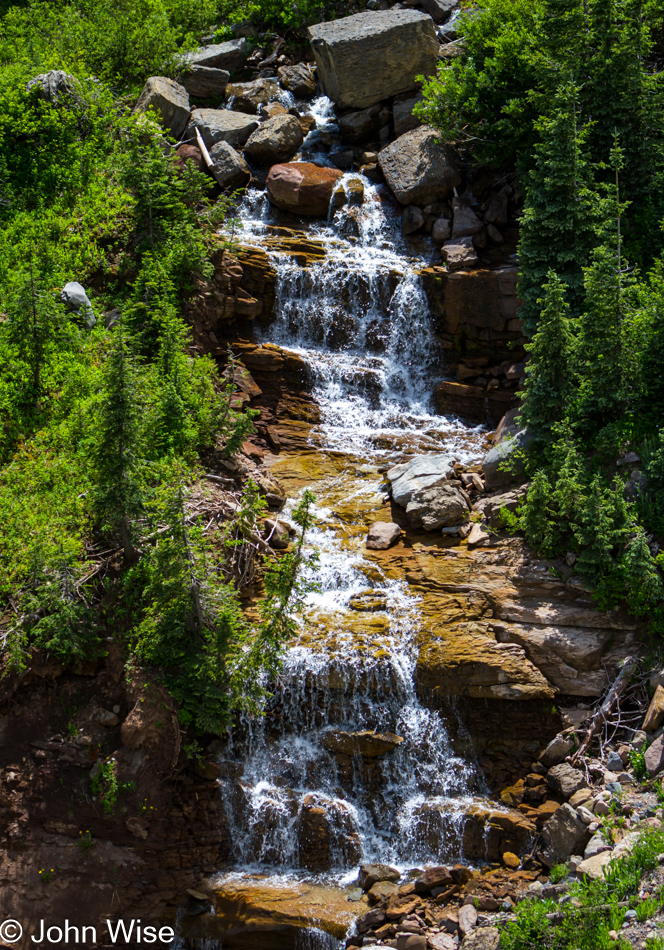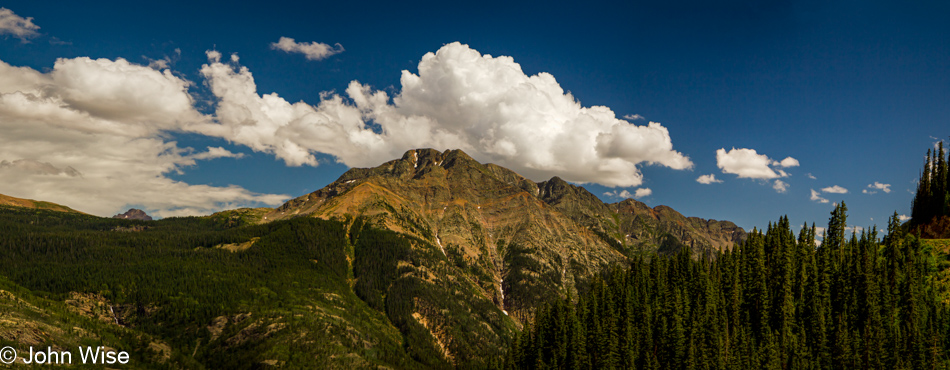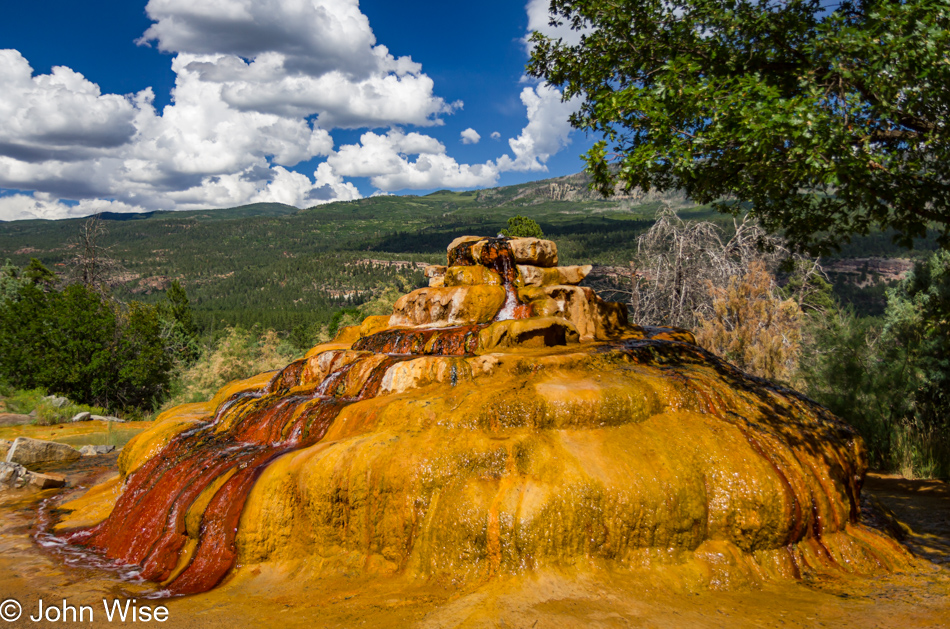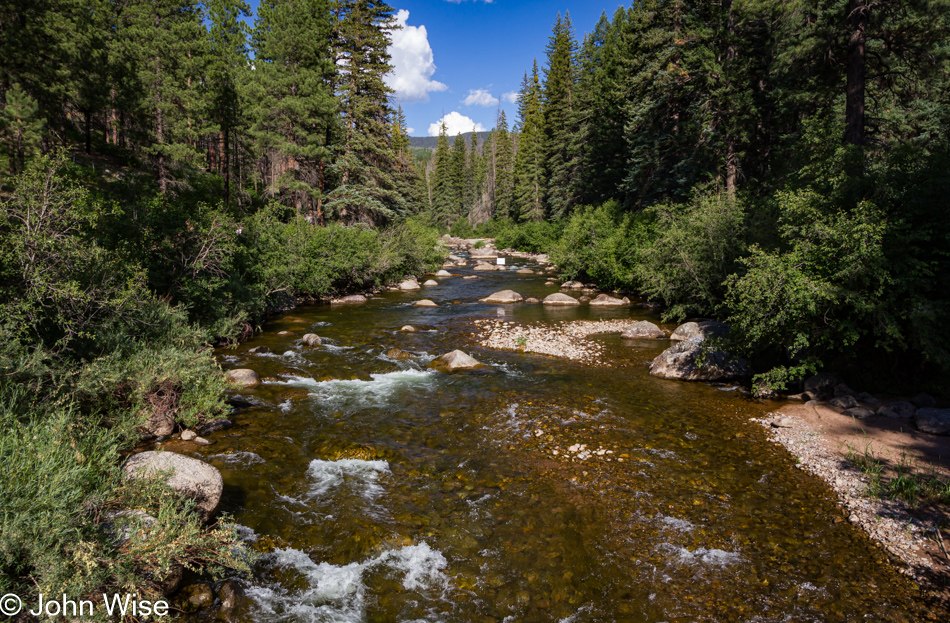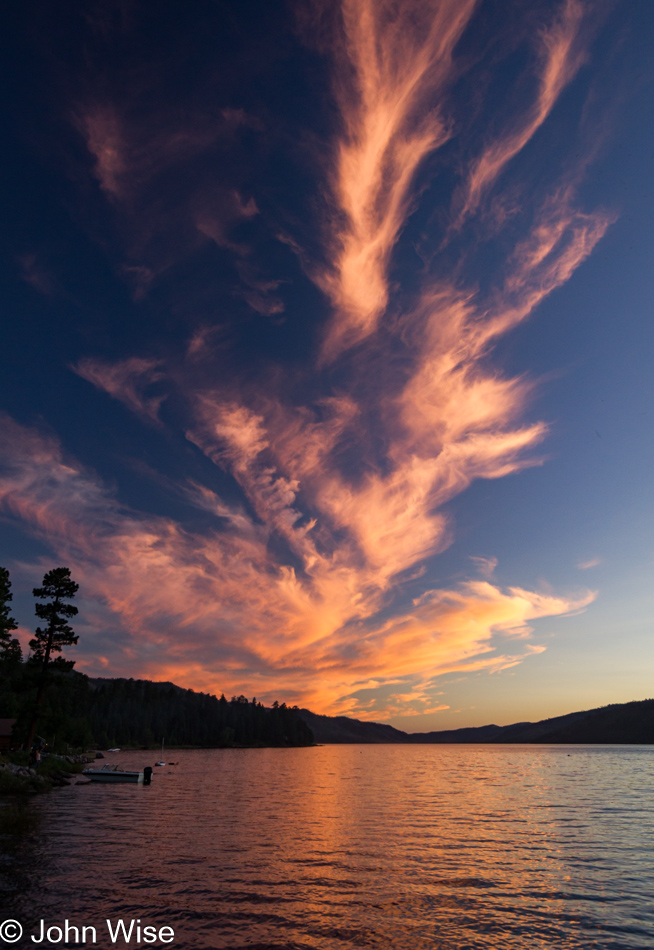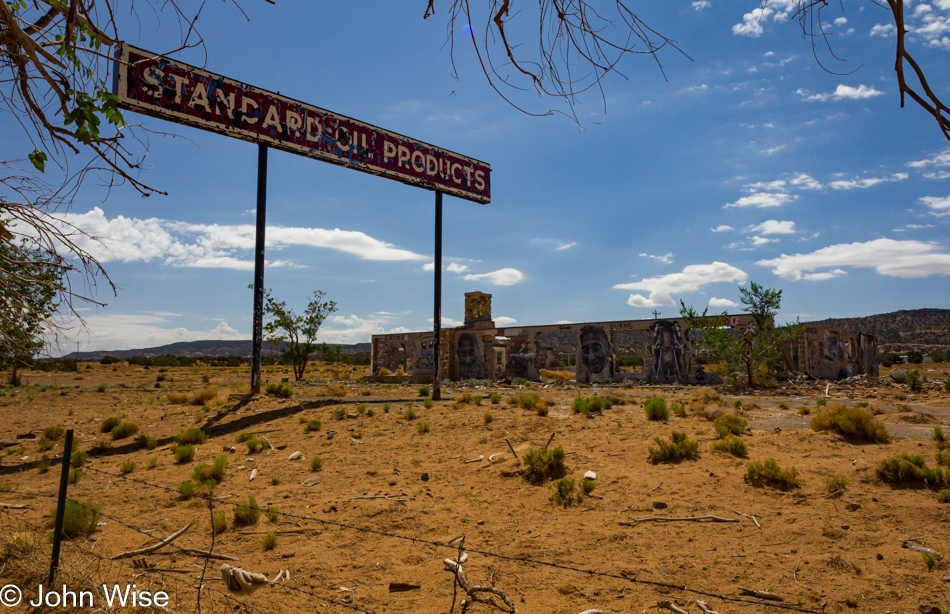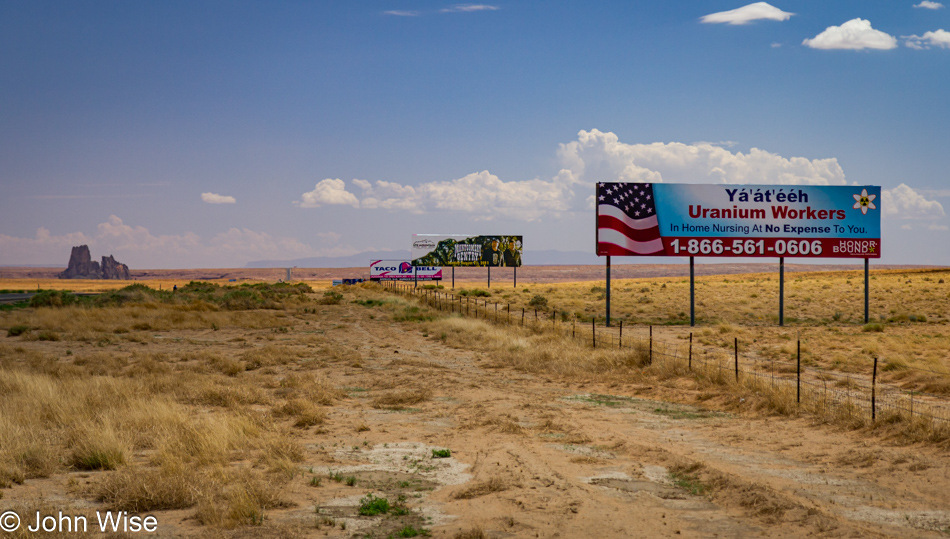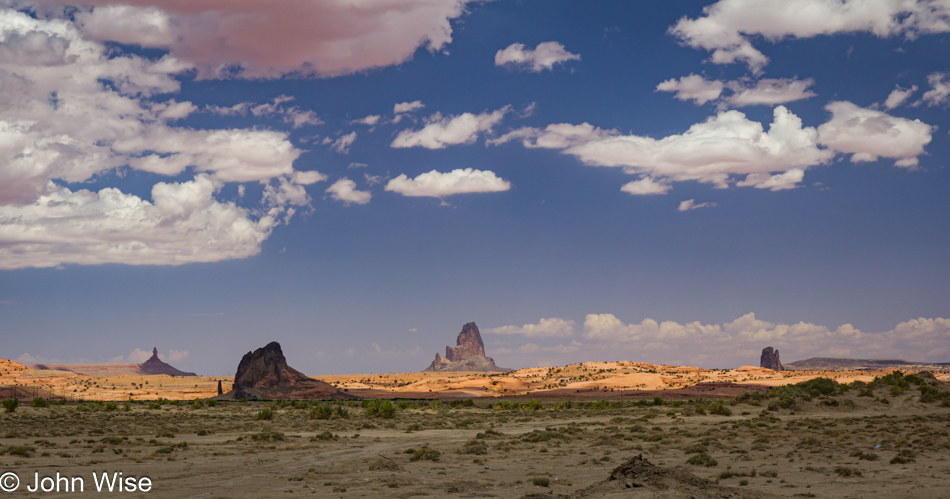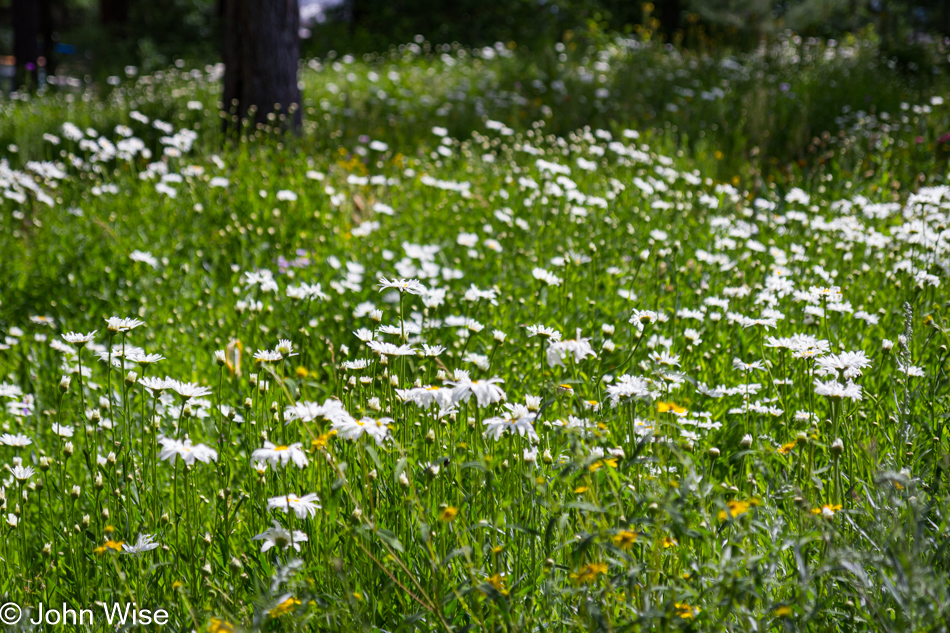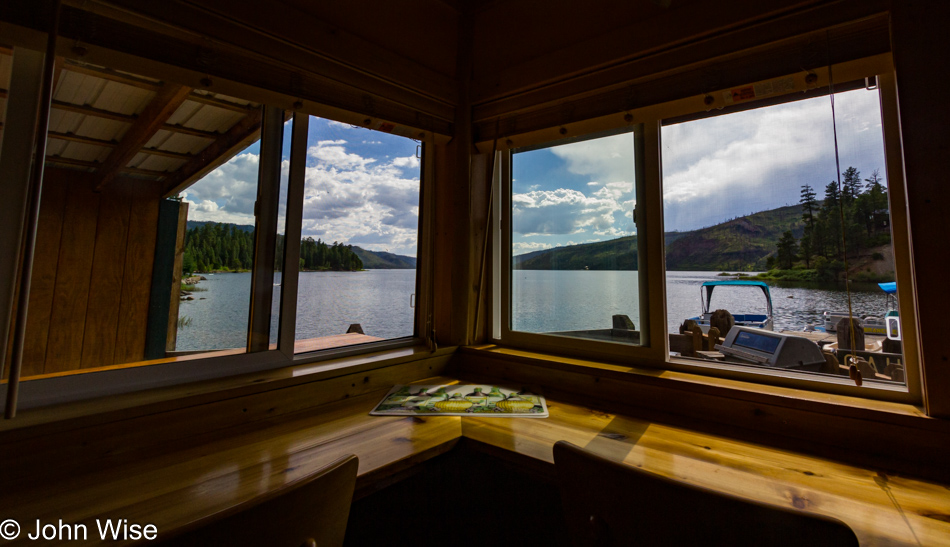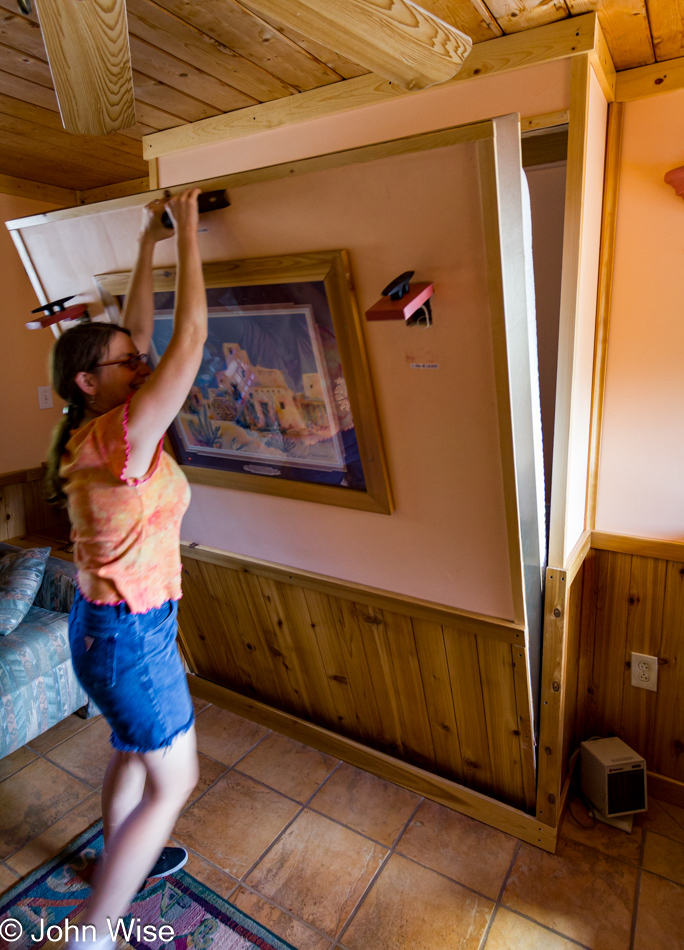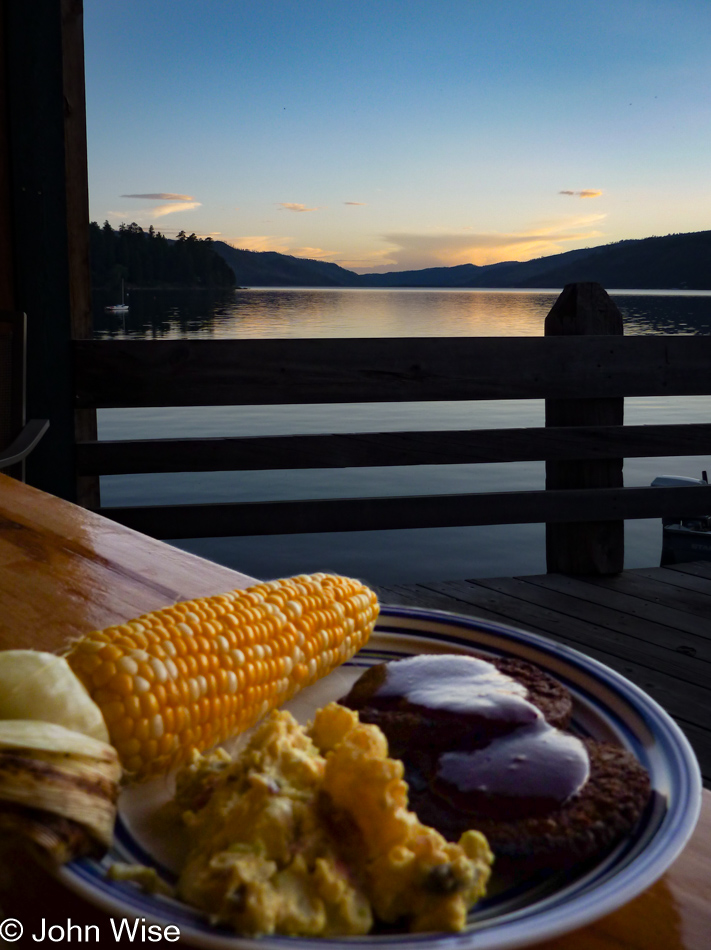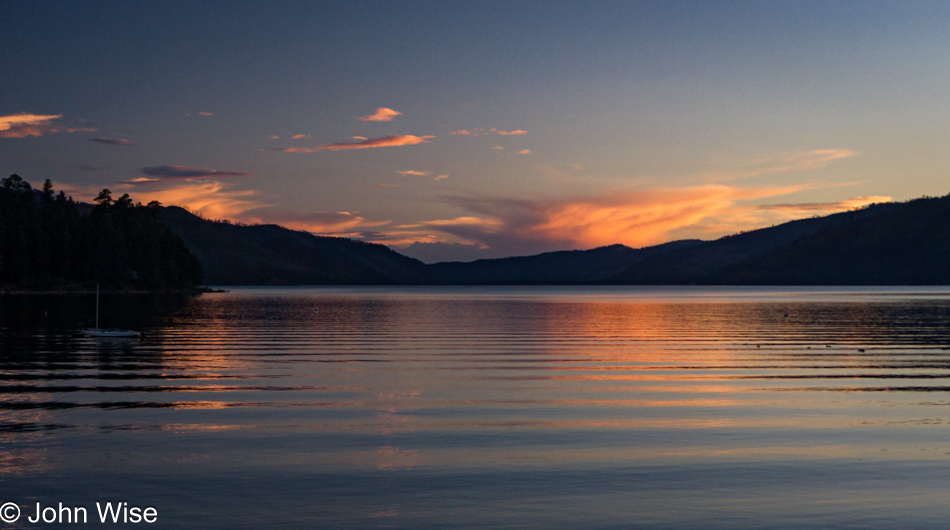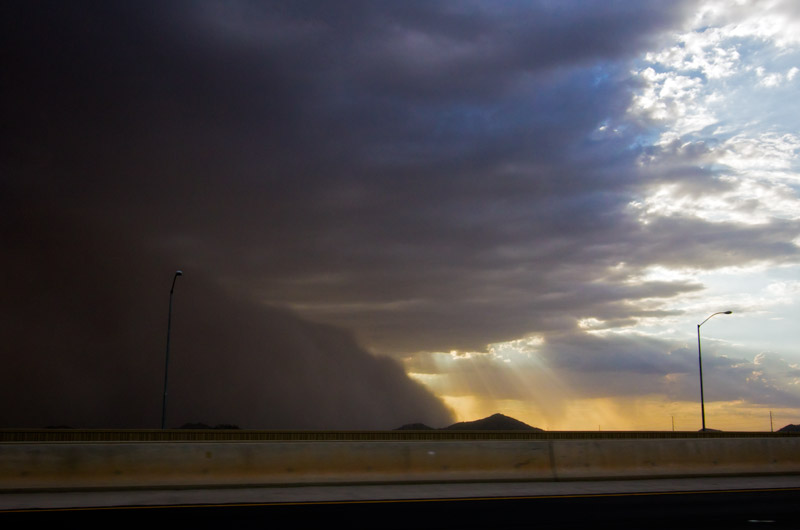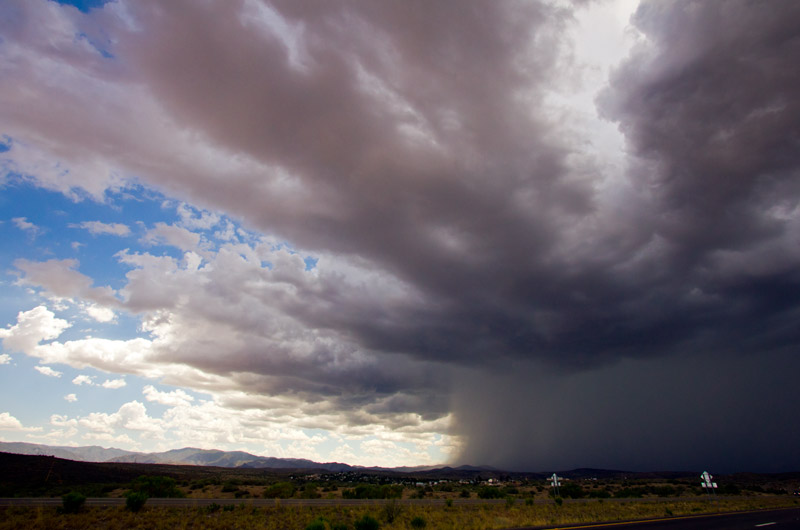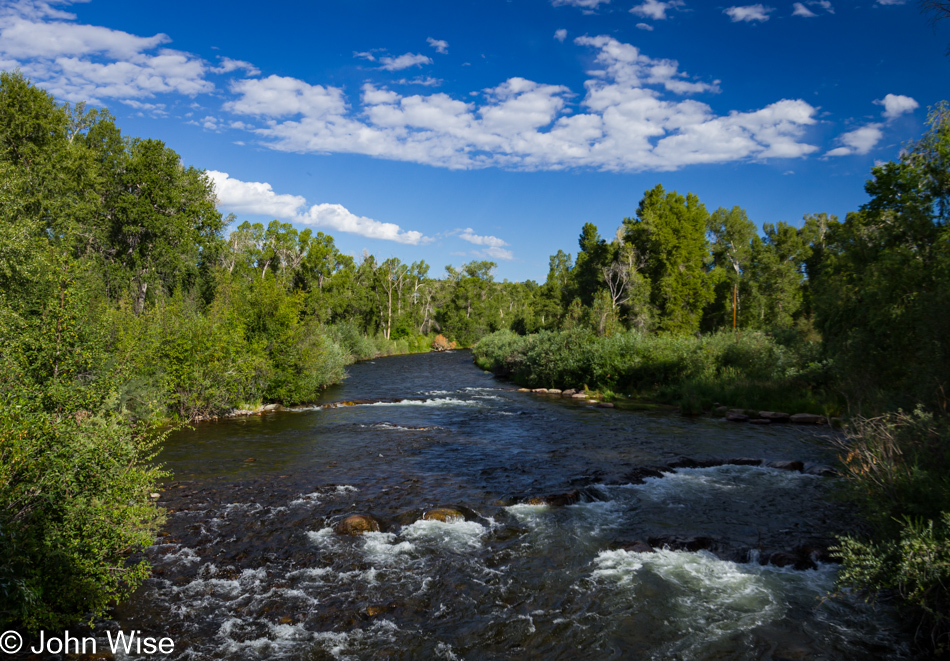
It’s going to be an easy day today. I don’t feel like going far, but I am curious about what lies east of Durango and south of Bayfield. Before entering the small historic downtown area of Bayfield, I had to first cross a little bridge spanning the Los Pinos River. This is the same river that feeds Vallecito Reservoir further upstream, where Caroline and I are staying during our visit to Colorado. If you drive the speed limit through town, it will take about 30 seconds to have seen it all. Back on the main road, I am moving away from the mountains that are fading in my rearview mirror.
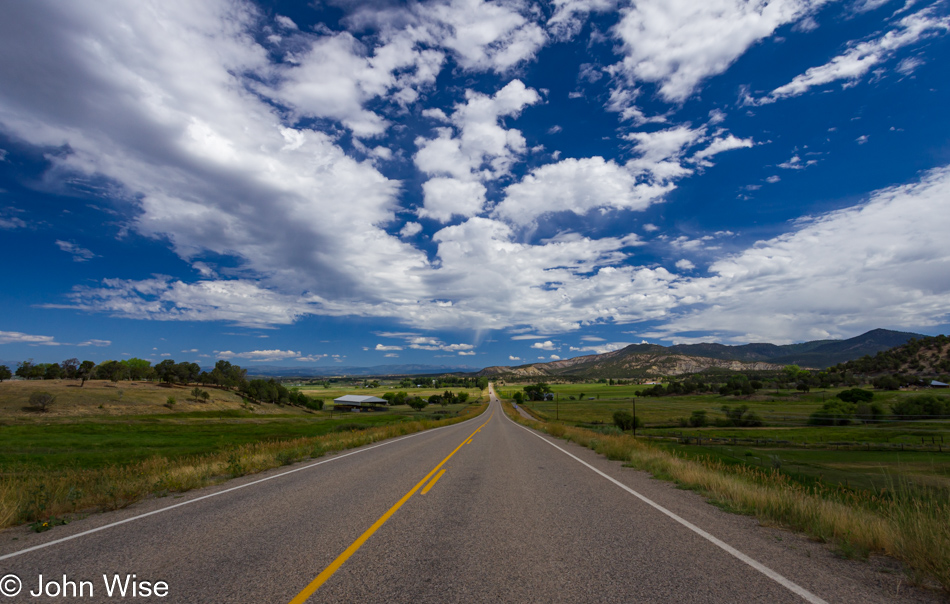
I followed a sign that pointed in the direction of Ignacio. Along the way, I passed Chimney Rock Archaeological Area. There were a couple of guys at the primitive gate with a small tent; obviously, something special was happening here today. I’m told the entry fee is $10 – cash or check; I have $7 cash and no check. There is no ATM to be found here either. On this particular weekend, Chimney Rock is hosting the Native American Cultural Gathering featuring singers, storytellers, and dancers from various Pueblos. This event is now on our calendar of things to return to. I suggest you check out the Chimney Rock website, as they have events all year round.
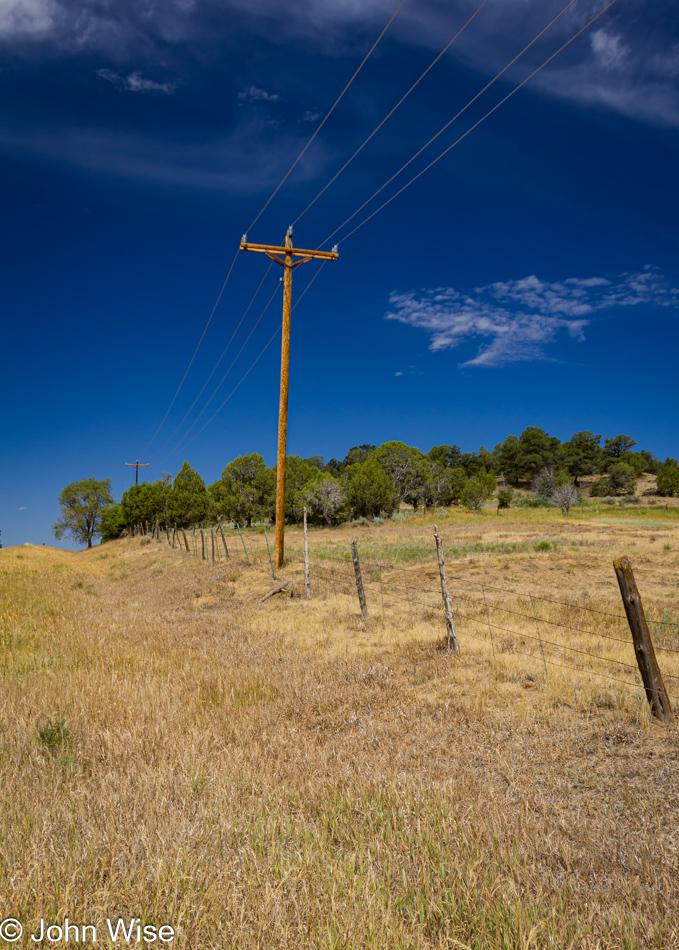
Good thing I didn’t have enough cash; I may have gone in and really enjoyed myself, but I’d rather share this with Caroline on a future visit as we both enjoy these types of events. So, I continued driving instead. These roads are not popular with RVers or bikers; it would appear that mostly locals were passing me. The land is mostly flat with some rolling hills, but still, this is a landscape I appreciate. If only I could have seen these places before power lines traced the routes, airplanes flew overhead, and the roar of engines screamed past me as people raced to buy something else.
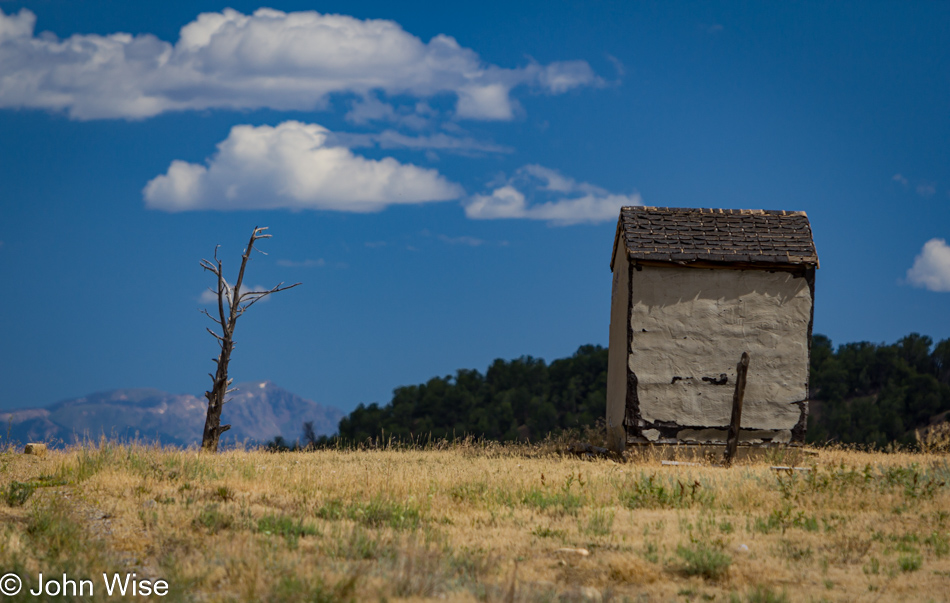
Moments of solitude are all I am afforded when stopped roadside to admire a view. Invariably, someone else will chase by; on occasion, youngsters think they need to honk the horn and yell some unintelligible words warbled by the Doppler effect of their speeding car. They disappear over the next rise, and I am once again alone to listen to the birds, the stir of grasses as lizards dart by, and a few brief seconds of silence.
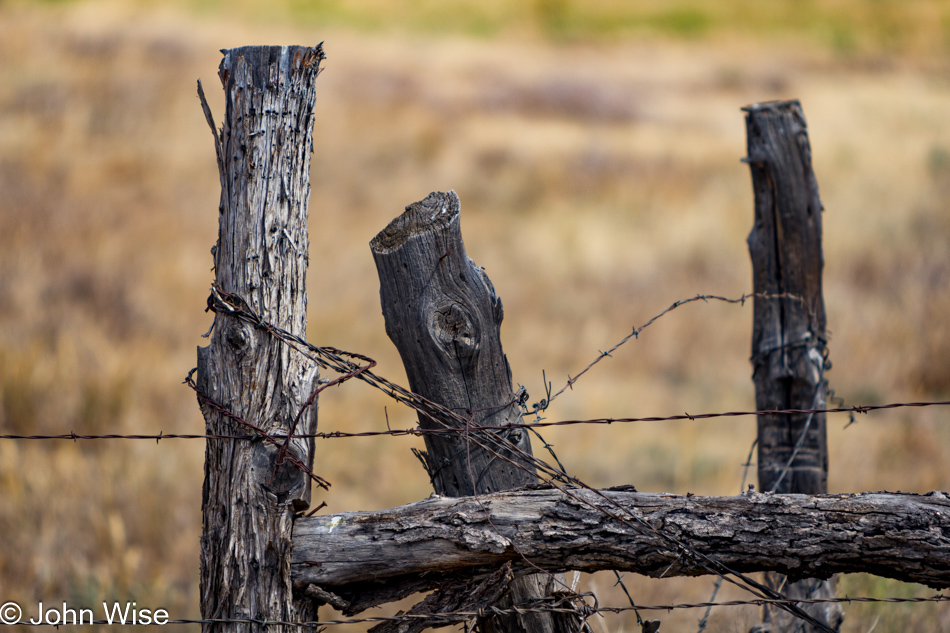
I’m a sucker for old weathered relics from the past. My imagination can easily get lost exploring the story behind the object that has performed sentinel duty for decades prior to my arrival. I enjoy dreaming of who the builders were, who passed this way, and what life was like for the folk who one day stood here chatting with a neighbor out in the middle of nowhere. I probably over-romanticize the scene, influenced by a movie or two too many, but that’s ok; I’m still happy that memories can take me somewhere after my intent has delivered me to the place where my mind can play.
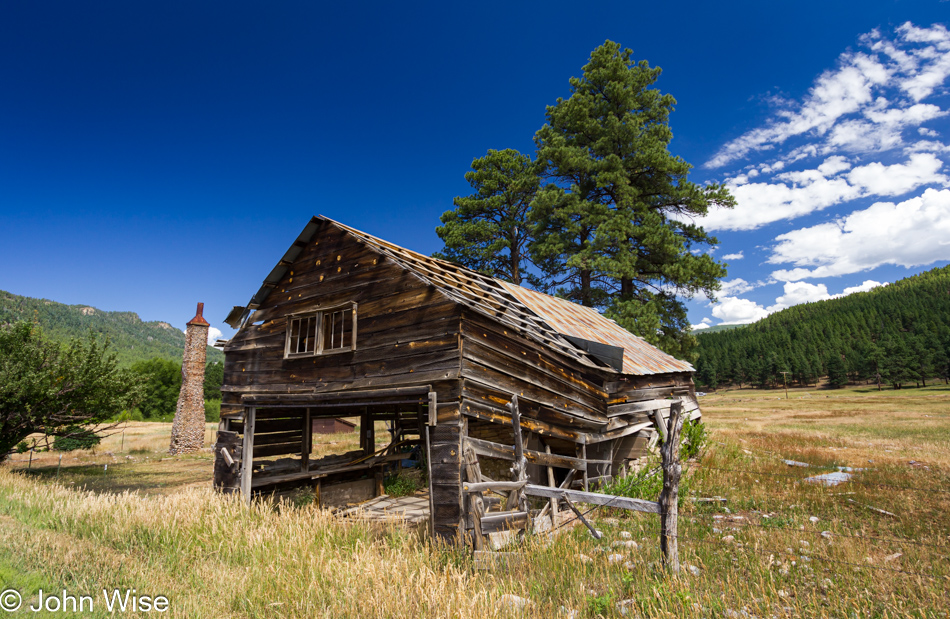
One more stop before this brief road trip is over, this time at a collapsing barn that appears to have also been a bunkhouse. The proper house is long gone; only its stone chimney survives in the background. Inside the building is a slightly underground “cellar,” not sure that’s what it was, but it looks like it could have functioned in that capacity to my untrained eye. There is an old bunk bed frame with a stamp of U.S. painted on the ends; looks like surplus World War II-era Army bunks. It will be when augmented reality becomes reality, and I can have some type of mobile device that, with the use of GPS, I can learn the history of the family that lived in the house and what kind of life they lived here at the foot of the San Juan Mountains, then I will buy a cell-phone or tablet.
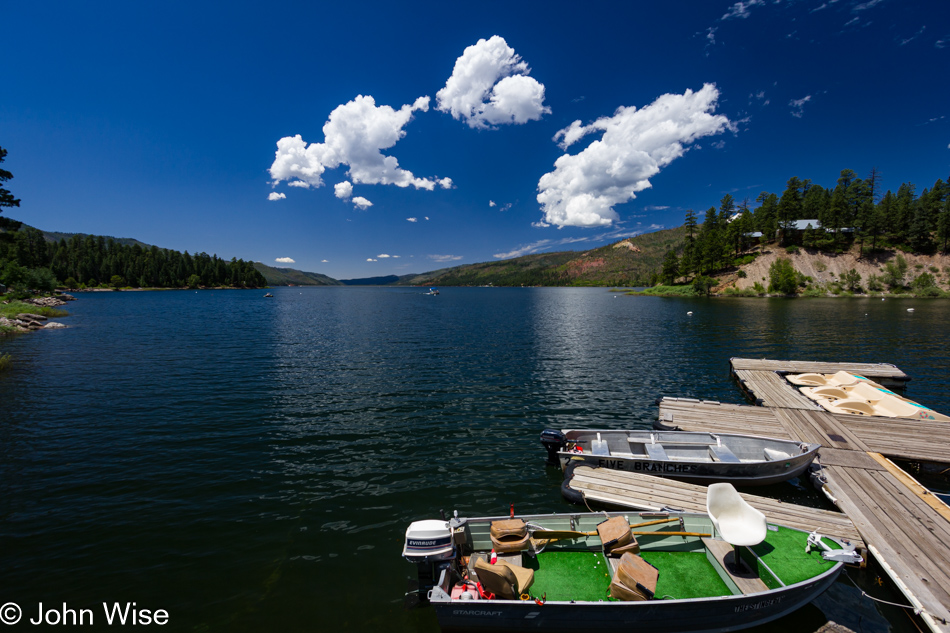
I was back at the cabin before lunchtime. Before, I would make a late lunch / early dinner for myself and grill a piece of fish for Caroline for when I meet her on campus later, I sat lakeside writing – and burning. How old does a man have to be before he learns that even in the shade, sunblock is required? Answer: it probably will never happen, so no numeric value of age can be given – thus, this is a trick question. The rest of the day was given to lounging right here with pen, paper, and a book for when my mind could not produce renderable words.
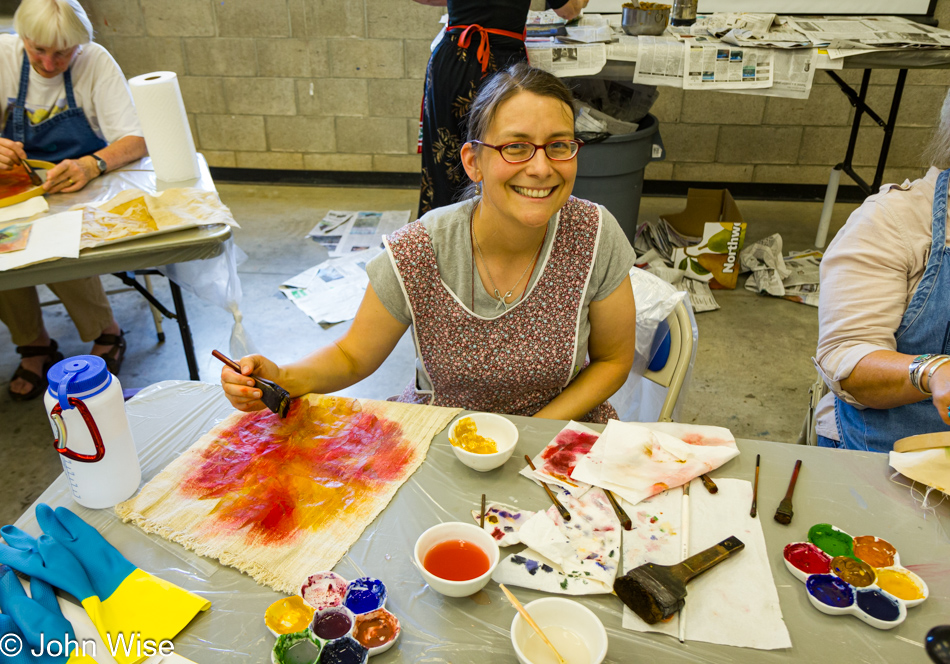
Here she is, my fiber-addicted wife, Caroline Wise. Metamucil, you ask; maybe oatmeal or whole wheat bread is her fiber of choice? Heck no, all that would be cheap compared to someone who has joined the flock of weavers, spinners, basket makers, dyers, knitters, and other assorted people who enjoy the hobby that takes over all of your space. Fiber artists don’t have anything like Knitters Anonymous; they have the exact opposite: Fiber Guilds. She’s obviously happy to see me, probably because I’ve brought Caroline her dinner, as we’d be sticking around after the workshops were done to attend the fashion show being held on campus.
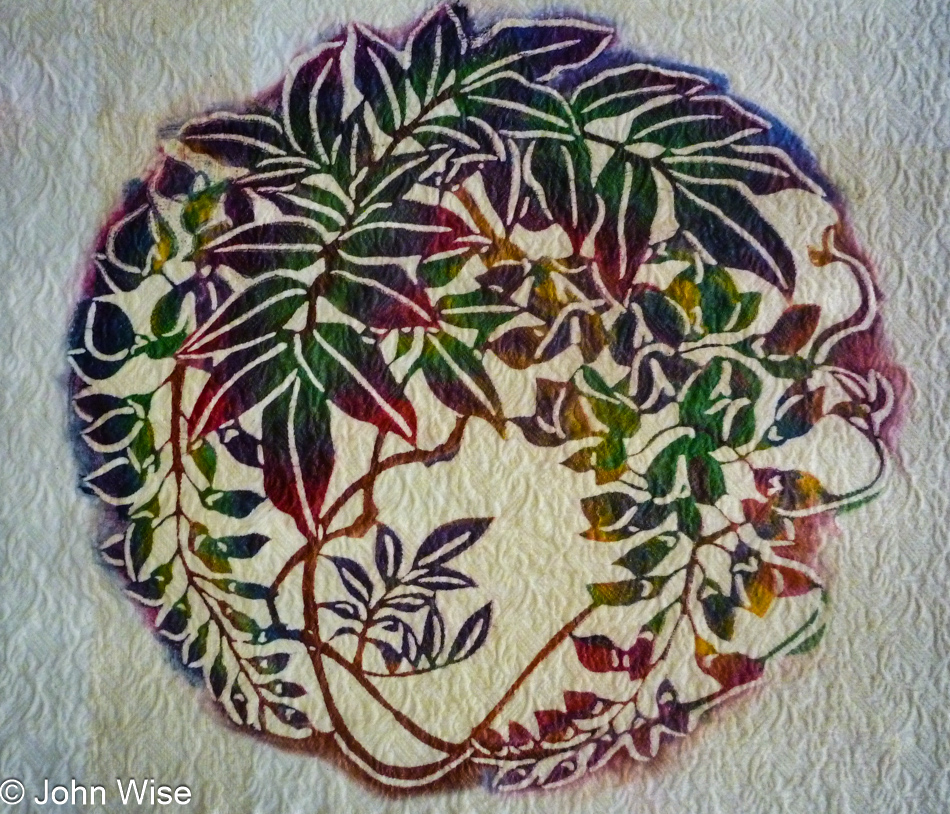
And what do guilds do? They organize workshops, retreats, and classes. They write books and magazine articles and produce videos. Bands of merchants selling the hot wares follow this tribe around to encourage further consumption and great new projects yet to be spun, frogged, carded, and strewn about as dozens of UFOs – Un-Finished Objects.

Shibori is an ancient Japanese fiber art similar to the Rajashtahni and Gujarati craft of Bandhani. These two styles of dyeing can involve an incredible amount of handwork. Small or even larger segments of cloth are wrapped, stitched, folded, twisted, and bound with string; at times, hundreds, even thousands, of the wrapped bundles are applied to a piece of cloth. This slows down and can stop the dye from reaching all of the cloth as it is dipped in dye to produce beautiful patterns. Now, think of where you may have seen or heard of a cloth that is a descendant of this process. It sounds a bit like Bandhani; how about the good old Bandana? Bet you didn’t know that it wasn’t the hippies of the 1960s who invented Tie Dye.

From furry heads to hot bodies. What kind of fibery workshop/festival event would be complete without a fashion show? A bad one, the Intermountain Weavers didn’t disappoint. This 80-something-year-old babe stole the show with her soon-to-be trendy again swimsuit that dragged out the wolf whistles. Betty relished the attention, strutting her figure while notching up the temperature in the theater another few degrees. She pranced left, sashayed right, and flaunted every bit of sexy she could muster.
